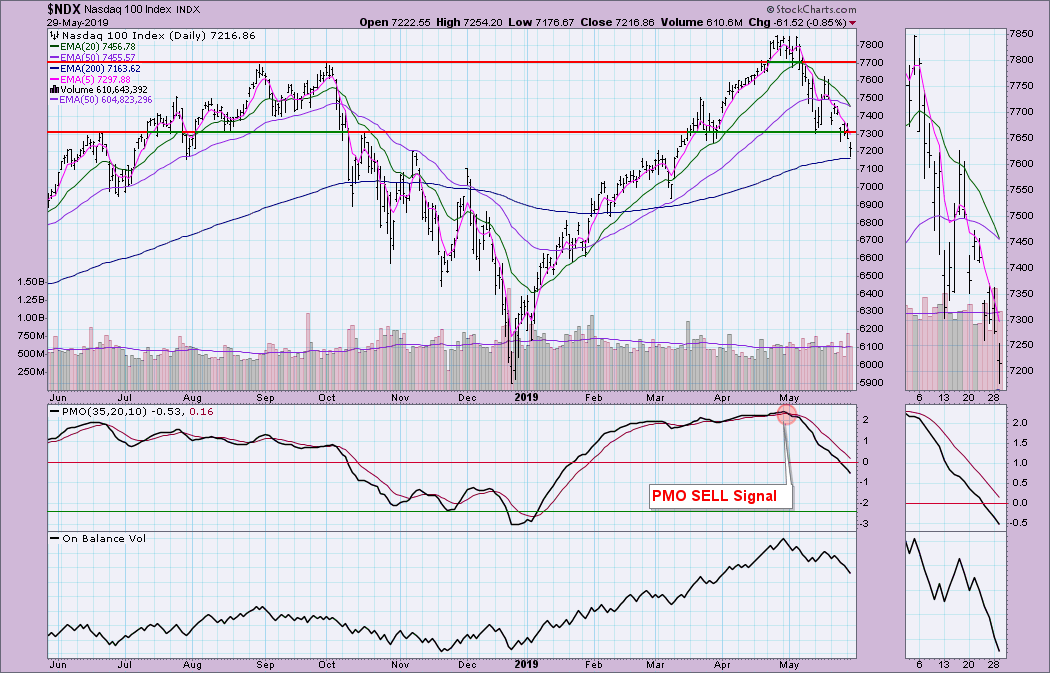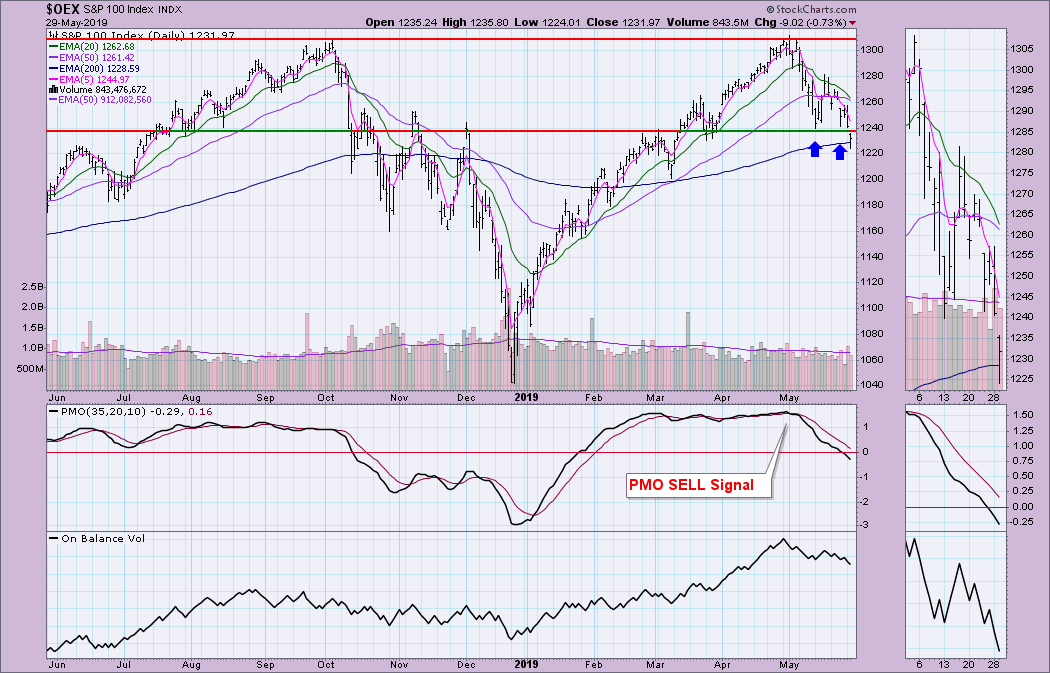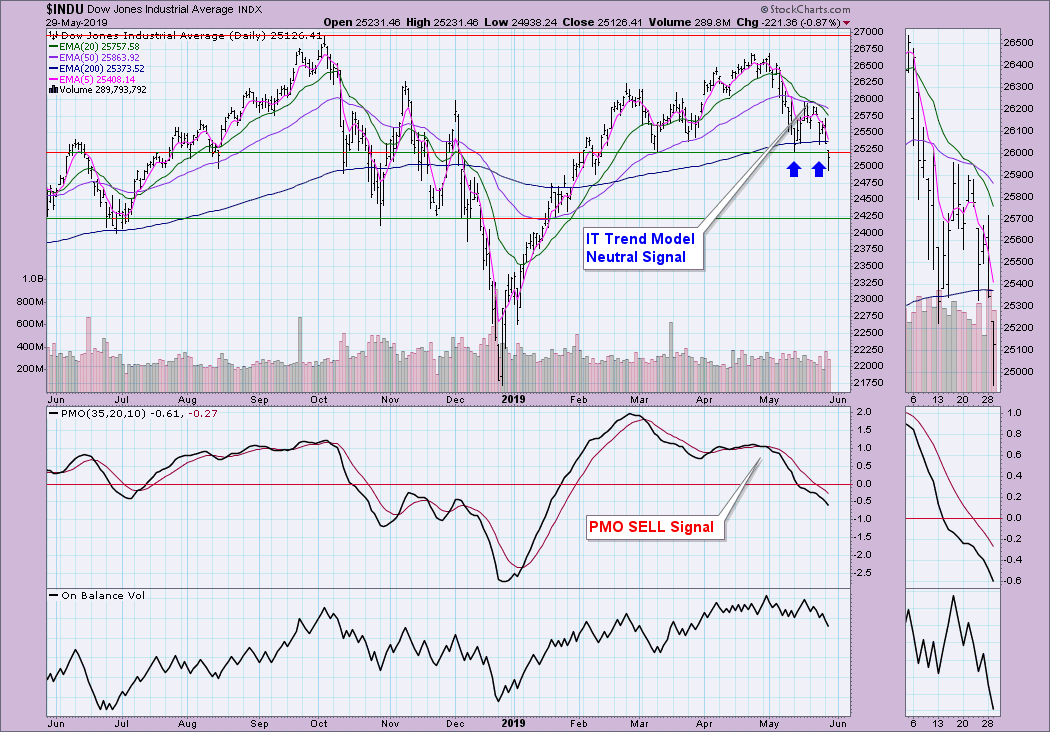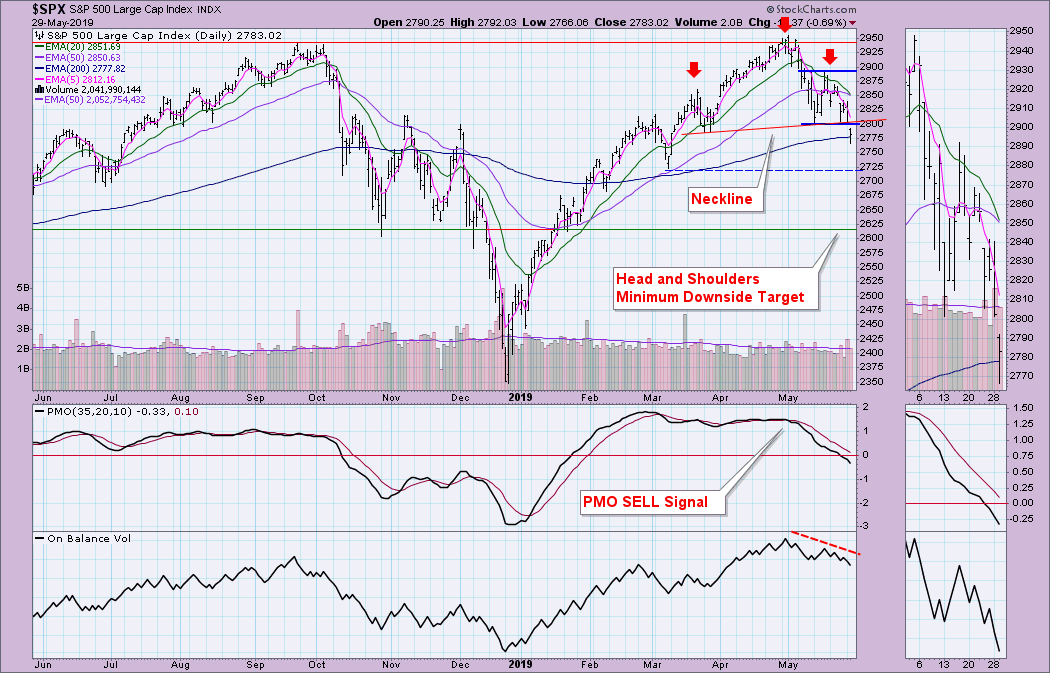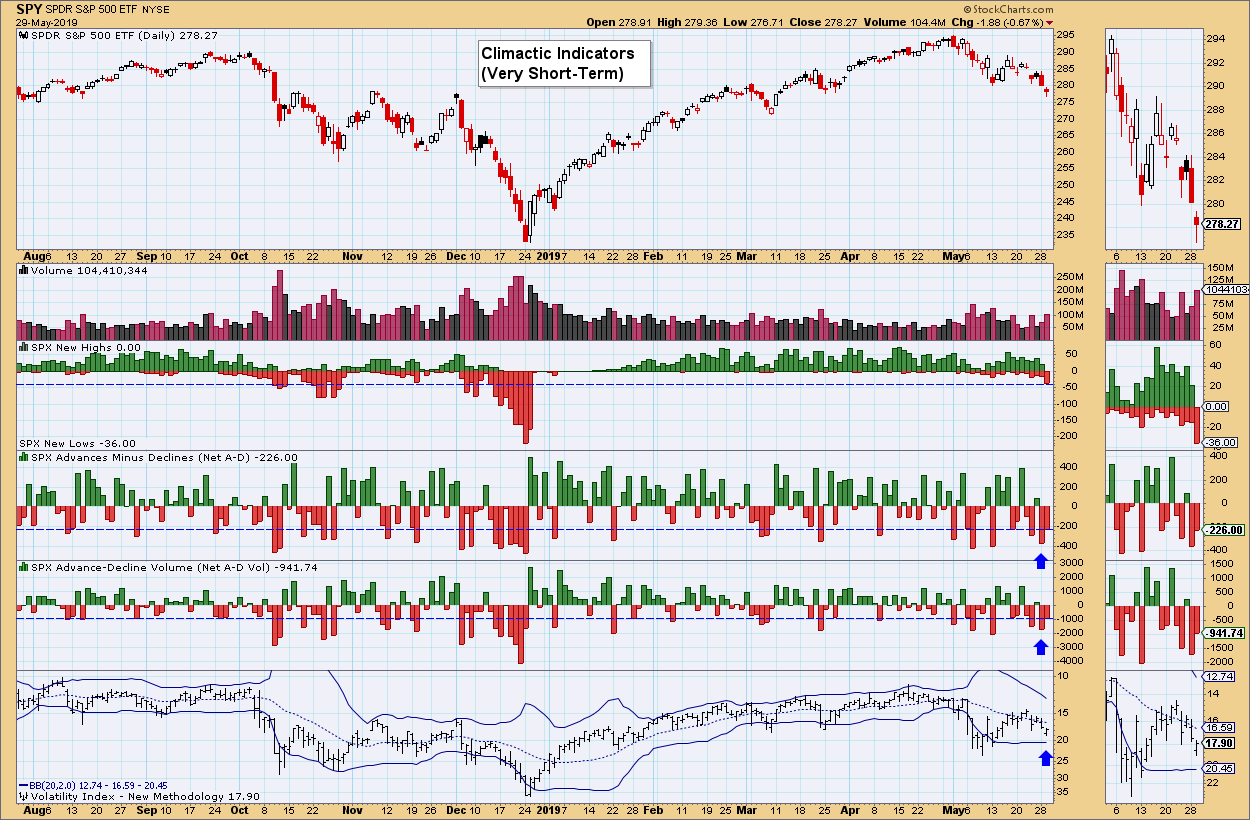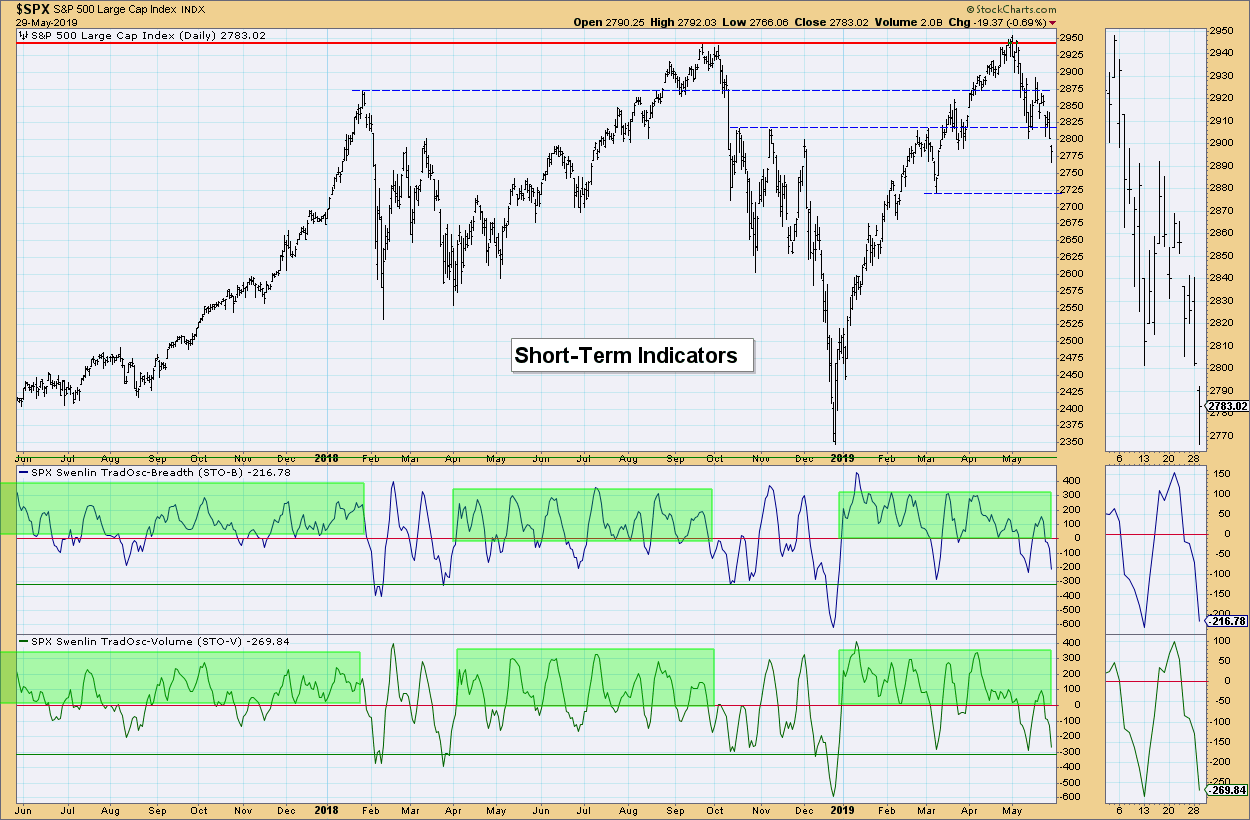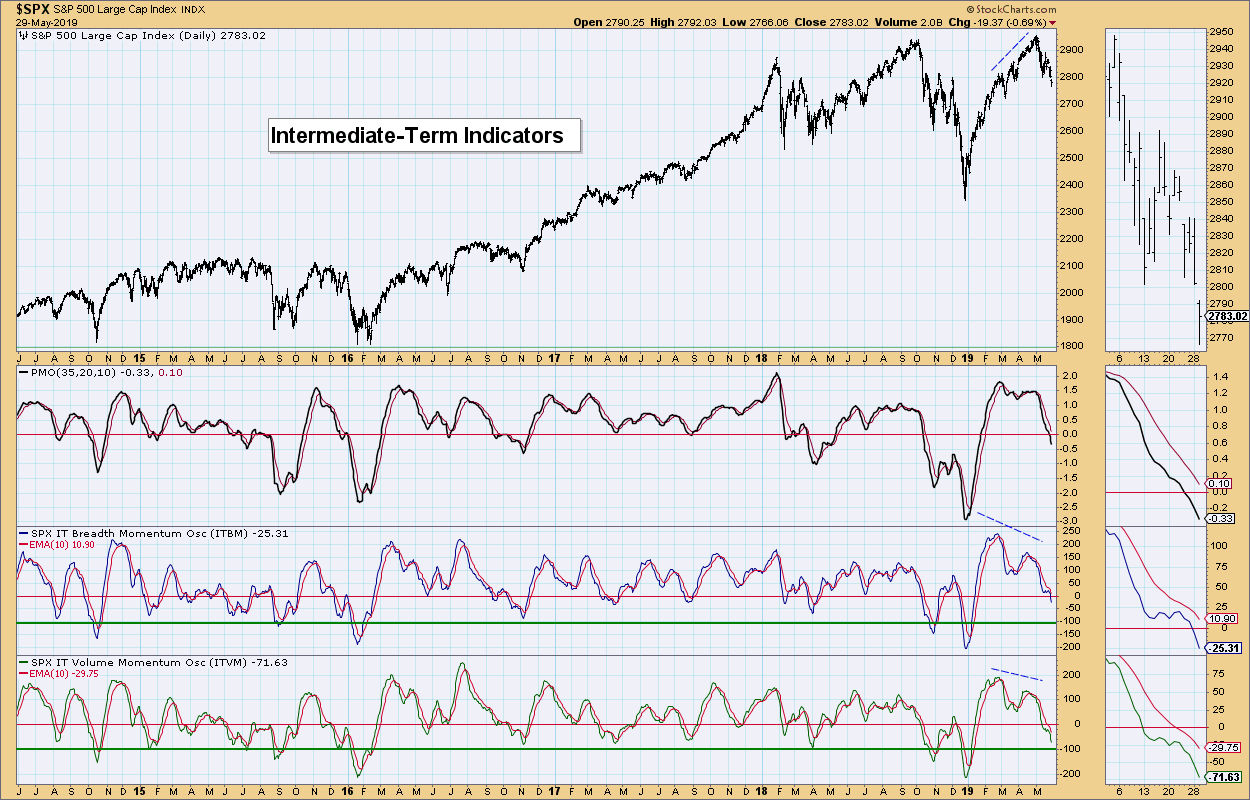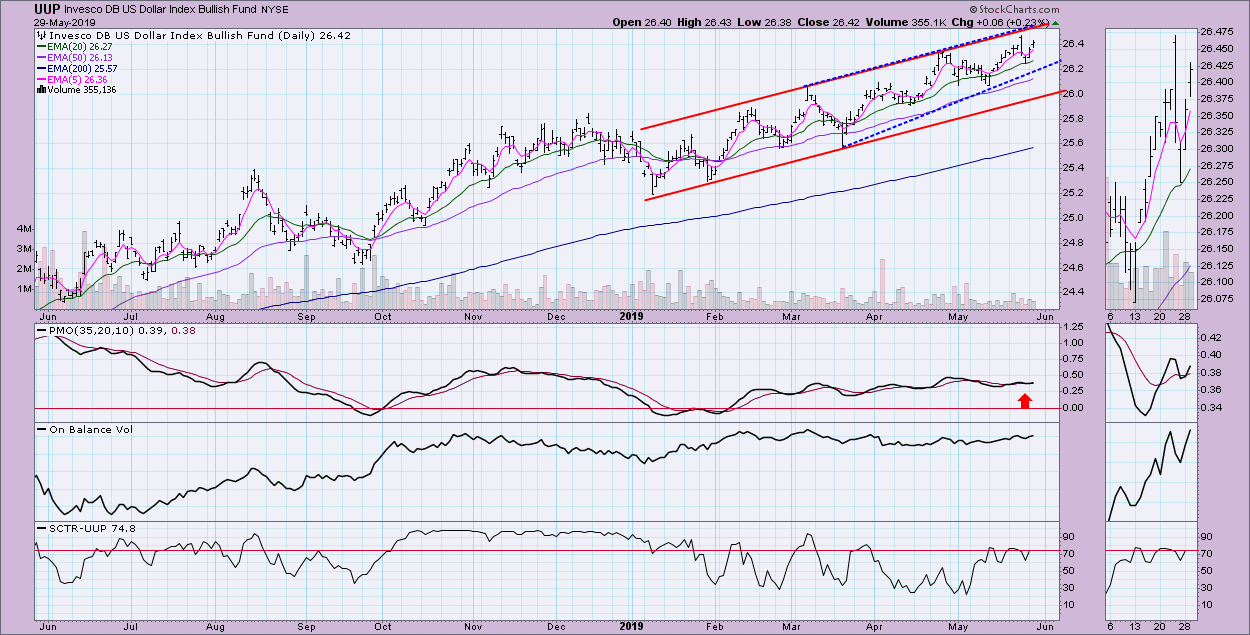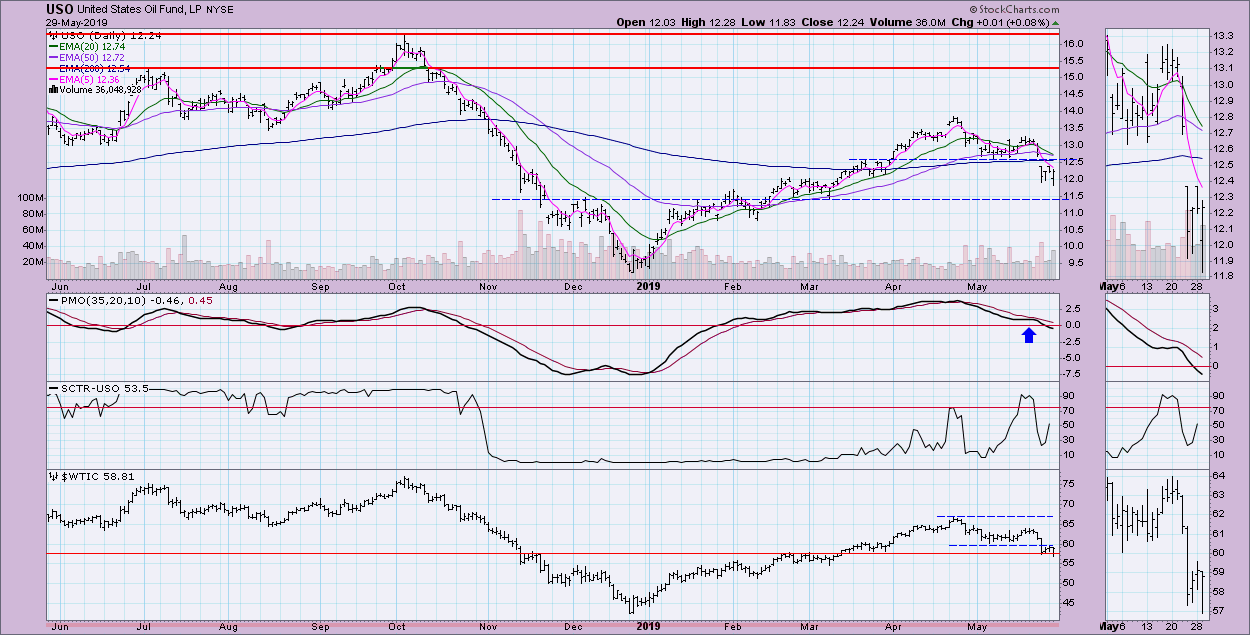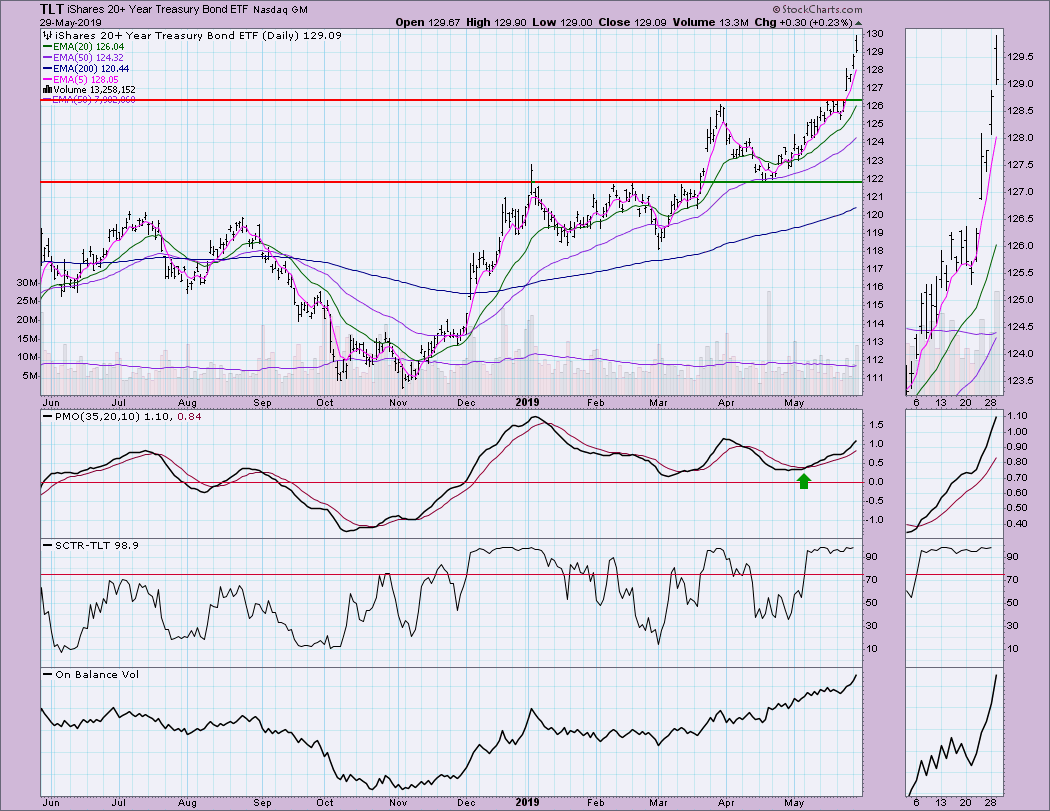
 I was somewhat surprised that the SPX, NDX and OEX did not lose their IT Trend Model BUY signals today. However, I would look for those signal changes tomorrow after the close. In order to avoid these Neutral signals, price would need to climb above the 50-EMA. As you can see from the charts below, that is highly unlikely.
I was somewhat surprised that the SPX, NDX and OEX did not lose their IT Trend Model BUY signals today. However, I would look for those signal changes tomorrow after the close. In order to avoid these Neutral signals, price would need to climb above the 50-EMA. As you can see from the charts below, that is highly unlikely.
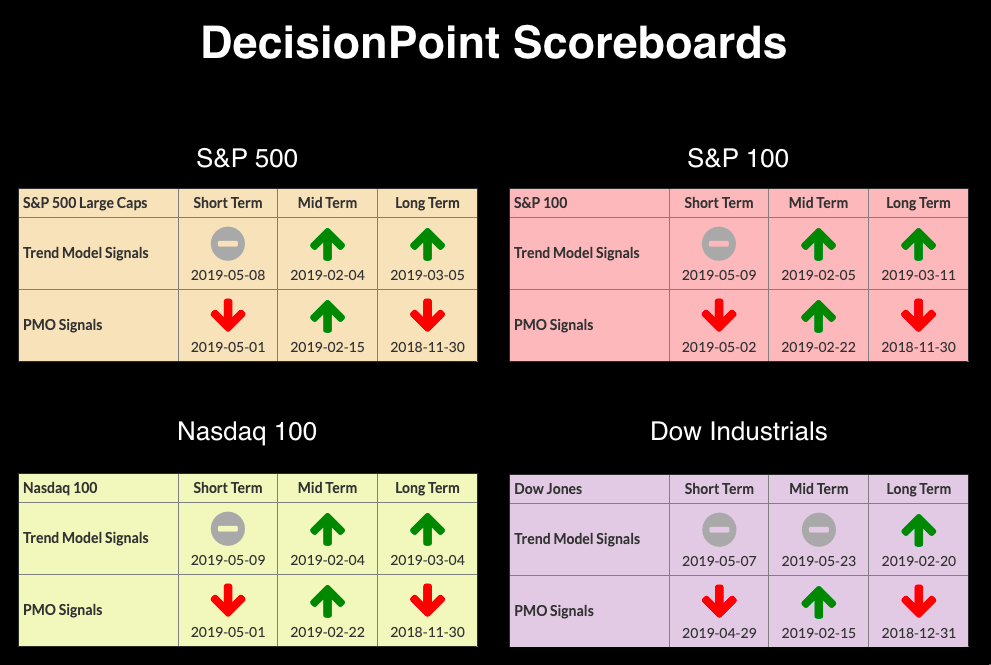
The DecisionPoint Alert presents a mid-week assessment of the trend and condition of the stock market (S&P 500), the U.S. Dollar, Gold, Crude Oil and Bonds.
Watch the latest episode of DecisionPoint on StockCharts TV's YouTube channel here!
SECTORS
Each S&P 500 Index component stock is assigned to one, and only one, of eleven major sectors. This is a snapshot of the Intermediate-Term and Long-Term Trend Model signal status for those sectors.
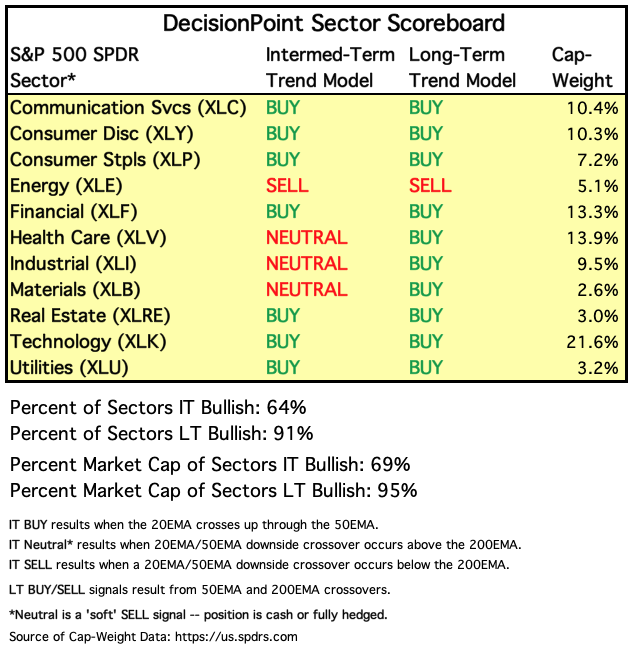
STOCKS
IT Trend Model: BUY as of 2/1/2019
LT Trend Model: BUY (SPY) as of 2/26/2019
SPY Daily Chart: I had thought we would see price remain in the large trading range I annotated last week. Today, though, we broke down. You could make a case for a large head-and-shoulders and this move today executed it. The minimum downside target is well below the next support level at 2800. Larry Williams (inventor of the Williams %R indicator) stated on today's MarketWatchers LIVE show that he sees a bear market in both bonds and equities on the horizon. His target for SPX was 2700. That would not at all reach the head-and-shoulders target.
Climactic Market Indicators: Yesterday saw the most climactic readings on advances-declines, but climactic readings continue with SPX New Lows reaching a level we have not seen since December of last year. I would look at these readings not as a selling exhaustion but, more likely, as a selling initiation. Once the VIX reaches the lower Bollinger Band, I'll look for a reversal in the short term.
Short-Term Market Indicators: These indicators are very oversold, but show no interest in turning around. They are climactic levels and signal the possibility of a bottom in the near future.
Intermediate-Term Market Indicators: These indicators have reached negative territory and, unlike their short-term brethren above, they are not oversold and could accommodate more downside.
Conclusion: The market continues to look weak and the indicators aren't giving us any good news. I would look for more downside going into Friday. When short-term indicators begin switching gears and rising, that's when I would look for a resumption of the bull market.
DOLLAR (UUP)
IT Trend Model: BUY as of 2/7/2019
LT Trend Model: BUY as of 5/25/2018
UUP Daily Chart: The Dollar remains in a rising trend. I'm noticing a bearish rising wedge within the trend, which I believe signals the likelihood of a test of the bottom of the rising trend channel. The PMO kicked out another signal change. During a period of steady rise (or fall), the PMO will flatten out. Right now, it isn't all that helpful. OBV is healthy with rising bottoms. We could see a test of the top of the channel before it resumes its move downward to execute the wedge.
GOLD
IT Trend Model: Neutral as of 4/16/2019
LT Trend Model: BUY as of 1/8/2019
GOLD Daily Chart: Gold is ready to test the top of the bullish declining wedge. The PMO has turned up and switched out of the SELL signal. Reverse correlation is strong to the Dollar. If the rising wedge on UUP executes, that will most certainly help Gold execute this bullish falling wedge.
CRUDE OIL (USO)
IT Trend Model: BUY as of 2/19/2019
LT Trend Model: SELL as of 11/23/2018
USO Daily Chart: USO is nearing an Intermediate-Term Trend Model Neutral signal as the 20-EMA moves lower to cross the 50-EMA. The PMO is suggesting more downside now that it has reached negative territory. $WTIC dropped briefly below support, at $57.50, but closed above it. I would look for USO to test the $11.50 support level.
BONDS (TLT)
IT Trend Model: BUY as of 12/6/2018
LT Trend Model: BUY as of 1/2/2019
TLT Daily Chart: Price is on a parabolic move. These usually end in disaster and, I have to say, given Larry Williams' outlook, I suspect that sharp decline is lurking in the shadows. Be cautious and set a trailing stop; they work brilliantly on stocks that are moving parabolically. If the parabola breaks down, the next area of "basing" would be down to at least $122.
Technical Analysis is a windsock, not a crystal ball.
Happy Charting!
- Erin
Email: erinh@stockcharts.com
**Don't miss any of the DecisionPoint commentaries! Go to the "Notify Me" box toward the end of this blog page to be notified as soon as they are published.**
NOTE: The signal status reported herein is based upon mechanical trading model signals, specifically, the DecisionPoint Trend Model. They define the implied bias of the price index based upon moving average relationships, but do not necessarily call for a specific action. They are information flags that should prompt chart review. Further, they do not call for continuous buying or selling during the life of the signal. For example, a BUY signal will probably (but not necessarily) return the best results if action is taken soon after the signal is generated. Additional opportunities for buying may be found as price zigzags higher, but the trader must look for optimum entry points. Conversely, exit points to preserve gains (or minimize losses) may be evident before the model mechanically closes the signal.
Helpful DecisionPoint Links:
DecisionPoint Shared ChartList and DecisionPoint Chart Gallery
Price Momentum Oscillator (PMO)
Swenlin Trading Oscillators (STO-B and STO-V)

